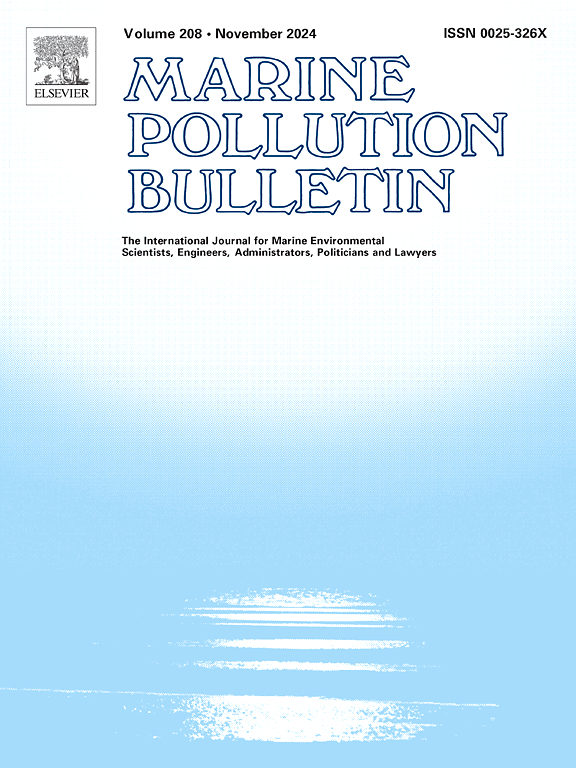加拿大安大略省西北部实验湖区大规模实地模拟石油泄漏后水和沉积物中石油碳氢化合物的出现、特征和生态风险分析。
IF 5.3
3区 环境科学与生态学
Q1 ENVIRONMENTAL SCIENCES
引用次数: 0
摘要
本研究评估了国际可持续发展研究所实验湖区(IISD-ELA)现场模拟石油泄漏对北方淡水湖的影响。在为期 6 年的监测计划中,没有直接油类负载的地点的水和沉积物中的总石油碳氢化合物 (TPH) 值较低。生物正构烷烃和热致性多环芳烃 (PAH) 在泄漏前后均占主导地位。在水中没有检测到石油生物标记物,但在一些沉积物中发现了微量石油生物标记物。大多数 TPH 和 PAH 含量都在加拿大环境部长理事会 (CCME) 和安大略省法规规定的可接受范围内,但也有一些 PAH 超过了指导标准。不过,超标频率在泄漏前后没有明显变化。这些结果表明,泄漏的油类在实验期间得到了有效控制,在采取适当的预防措施和补救措施后,环境恢复到了接近背景的水平。本文章由计算机程序翻译,如有差异,请以英文原文为准。
Occurrence, characterization, and ecological risk analysis of petroleum hydrocarbons in water and sediments following large-scale field simulated oil spills at the experimental lakes area, Northwestern Ontario, Canada
This study assessed the impact of on-site field-simulated oil spills at the International Institute for Sustainable Development-Experimental Lakes Area (IISD-ELA) on a freshwater boreal lake. Low total petroleum hydrocarbons (TPH) values were obtained in water and sediments from the locations without direct oil loading across the 6-year monitoring program. Biogenic n-alkanes and pyrogenic polycyclic aromatic hydrocarbons (PAHs) were predominant pre- and post-spill. No petroleum biomarkers were detected in the water, but trace levels appeared in a few sediments. Most TPH and PAH levels were within acceptable limits set by the Canadian Council of Ministers of the Environment (CCME) and Ontario regulations, though some PAHs exceeded guidelines. However, the frequency of exceedances did not change significantly before and after the spill. These results suggest that the spilled oil was contained effectively during the experiment period, and the environment recovered to near-background levels afterward with appropriate precautions and remediation operations.
求助全文
通过发布文献求助,成功后即可免费获取论文全文。
去求助
来源期刊

Marine pollution bulletin
环境科学-海洋与淡水生物学
CiteScore
10.20
自引率
15.50%
发文量
1077
审稿时长
68 days
期刊介绍:
Marine Pollution Bulletin is concerned with the rational use of maritime and marine resources in estuaries, the seas and oceans, as well as with documenting marine pollution and introducing new forms of measurement and analysis. A wide range of topics are discussed as news, comment, reviews and research reports, not only on effluent disposal and pollution control, but also on the management, economic aspects and protection of the marine environment in general.
 求助内容:
求助内容: 应助结果提醒方式:
应助结果提醒方式:


